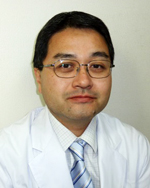Message from the Director

The Nagoya Proton Therapy Center opened in February 2013 as the first proton therapy facility in the three Tokai area prefectures in Aichi, Gifu, and Mie.
Thanks to the advice of mainly Tokai area specialists in the various fields, we started treating prostate cancer while developing our protocols, and from there have gradually expanded the range of organs and sites we can treat.
In January 2014, we were the first clinic in Asia to commence treatment using the spot scanning method, and later were able to start intensity modulated proton therapy (IMPT), too.
Since April 2016, insurance has covered pediatric tumors, and with the help of doctors from other core facilities in the city we were able to start providing treatment from July of that year.
In addition, in April 2016, all facilities in Japan offering proton therapy began providing medical care based on a set of unified treatment standards.
By registering to a database, and analyzing, data from individuals who underwent treatment (with all due care taken to protect personal information), we have been able to build up a system in order to establish evidence.
As of April 2017, medical treatment based on unified treatment standards for target diseases other than pediatric tumors is classified as advanced medical care, and thus ineligible for insurance; but we will actively work for the further expansion of insurance coverage.
In addition, we hope to be able to create a system for even greater cooperation among related medical departments both in our hospital and externally that will afford our patients an even greater sense of security as they undergo therapy.
April 2017
Thanks to the advice of mainly Tokai area specialists in the various fields, we started treating prostate cancer while developing our protocols, and from there have gradually expanded the range of organs and sites we can treat.
In January 2014, we were the first clinic in Asia to commence treatment using the spot scanning method, and later were able to start intensity modulated proton therapy (IMPT), too.
Since April 2016, insurance has covered pediatric tumors, and with the help of doctors from other core facilities in the city we were able to start providing treatment from July of that year.
In addition, in April 2016, all facilities in Japan offering proton therapy began providing medical care based on a set of unified treatment standards.
By registering to a database, and analyzing, data from individuals who underwent treatment (with all due care taken to protect personal information), we have been able to build up a system in order to establish evidence.
As of April 2017, medical treatment based on unified treatment standards for target diseases other than pediatric tumors is classified as advanced medical care, and thus ineligible for insurance; but we will actively work for the further expansion of insurance coverage.
In addition, we hope to be able to create a system for even greater cooperation among related medical departments both in our hospital and externally that will afford our patients an even greater sense of security as they undergo therapy.
April 2017

